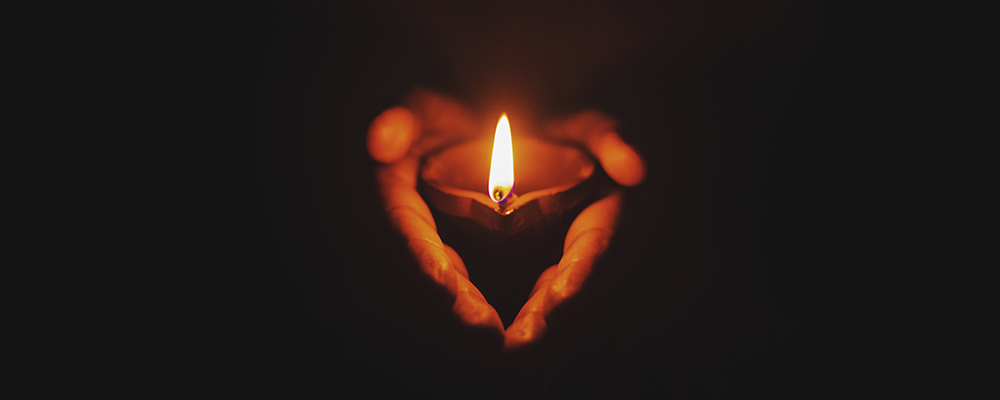
It’s probably fair to say that until they learn a little about the nature of dreams, most people have absolutely no idea what their dreams mean. Yet they’re fascinated; they want to know! Who can they ask?
Somewhere in this big and beautiful world, a dream group is in progress. Nine people sit in a circle, perhaps around a soothing candle in the fading evening light.
One has just shared her dream about jumping from a high cliff into the sea, diving deep before coming up for air and finding herself cradled in the arms of a strong swimmer with a soulmate glint in his eyes.
A talking stick is passed to the woman to her left: “If this were my dream,” she says, “I would be thinking about taking a leap of faith.”
The talking stick changes hands. “If this were my dream,” offers the next voice, “I would want to do a deep dive into my emotions before deciding what to do next.”
The stick continues its journey, “If this were my dream,” a deeper voice intones, “I’d be wondering what I’m jumping from: what am I leaving behind?”
The dreamer’s eyes slide to the next person in the circle. A younger voice pipes up, “If this were my dream, I’d be reflecting on what I’ve got myself into, and whether I’ll survive.”
A croaky voice follows, “If this were my dream, I’d be pondering why I’ve got myself into something so deep that I need to come up for air, to break through in some way.”
The dreamer leans forward as a willowy woman reaches for the stick. “If this were my dream,” her shaky voice tentatively whispers, “I’d be exploring what makes me feel safe, what gives me that cradled feeling.”
The dreamer nods, stares into the flickering candle as the final person takes the proffered stick. “If this were my dream,” the confident tone resonates within the sacred space, “I’d ask myself if I’m hoping for rescue instead of making my own way through life’s choppy seas.”
All eyes are now on the dreamer as she folds the warmed talking stick to her heart: “Thank you. You’ve all given me plenty to contemplate. I feel that the swimmer is my future soul mate. I’ll never forget his eyes. I’ll recognise them again when I find him.”
She extinguishes the candle, the closing ritual.
An almost audible sigh ripples around the circle, the darkness concealing an inevitable eye roll or two. Eight heartfelt and useful offerings extinguished by the dreamer’s belief that the man in her dreams was out there, somewhere, waiting for her.
The “If this were my dream …” approach is one that many dream groups adopt. While it can offer helpful openings for exploration, it’s largely based on an idea that only the dreamer recognises the true meaning of their dream. If the members of the group are well educated in dreamwork, their individual perspectives may be well-informed, their offerings carefully worded to engage the dreamer in meaningful reflection. In my fictitious example, I imagined some giving knowledgeable, helpful offerings while others’ perspectives clearly reflected their personal responses to the dream scenario.
I also assigned the imaginary dreamer a blind eye, or streak of denial. She didn’t really want to open to more symbolic interpretations of her dream. She wanted affirmation that she had dreamed of her soul mate, a real person with an identifiable physique, someone to search for. But it’s unlikely that she’ll find him in this exact guise: our dreams introduce us to parts of ourselves – conscious or unconscious. Her dream group companions offered her avenues to discover this part of herself. She chose not to travel those paths.
Does a dreamer have the last say on the meaning of their dream?
Yes, of course. Our fictitious dreamer found something meaningful to herself in her dream: she valued the idea that her soul mate was out there and that she was destined to find him. Whether or not this is true, it gave her a sense of meaningful purpose. It’s sad, though, that she missed the opportunity for the greater reward of understanding her mindset and transforming it in healing ways to open her to live her best life.
Dreams, when approached with the right tools and techniques, reveal the dreamer’s mindset.
The revealed mindset – conscious and unconscious – helps the dreamer to understand why they experience life in the way that they do, and what they can do to change this, if needed. Dreams reveal our limiting beliefs, unresolved issues that affect our responses to life, the lens through which we view and interact with the world. Our dreams also reflect our progress, breakthroughs, healing, and offer fertile ground for creative problem solving.
If you have the right tools and techniques, you can sit down and interpret your own dreams. As with all tools and techniques, it may take practice until you become fluent, but every little step you take is a step toward unfolding the meaning of your dream and gaining confidence in your growing abilities.
Can someone else interpret your dreams?
If they have the tools and techniques, they know the specific steps to take to reveal the dreamer’s mindset. Some of the tools and techniques are cut and dried; others offer avenues of exploration, ways of leading the dreamer along a path, gently guiding their focus until the shadows come to light.
You can learn how to help people understand their dreams, how to guide them to explore the symbols and dramas of a dream and make the connections that lead to a rounded interpretation. With practice you’ll notice that your intuitive eye begins to rapidly spin gold, processing the tools and techniques faster than your mind can think them through, seemingly downloading the meaning of the dream from nowhere.
It can be difficult to interpret your own dreams if you have a touch of denial, a vested interest in not seeing the truth, or if the subject matter is just so close to you that you can’t stand back and untangle it to gain clarity. On the rare occasions when I feel I haven’t got to the very depths of one of my own dreams, I imagine it’s a client’s dream. I go back to square one and approach it as if it has been submitted as a dream for interpretation by email and within a few minutes I have the solution.
How do you know when an interpretation is correct? You feel a subtle shifting sensation, a new sense of grounding, perhaps goose bumps, maybe a shed tear, and invariably you notice an automatic release a breath, a sigh, a sense of letting go.




